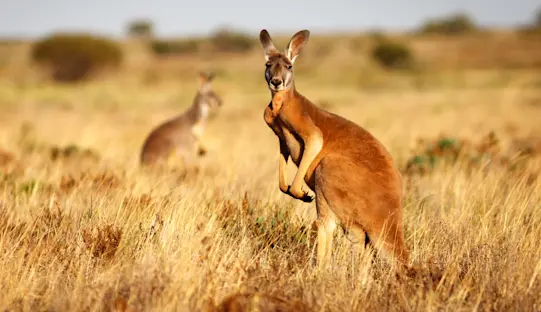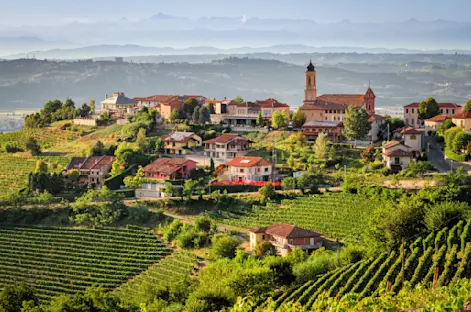Across the rolling hills of England and the rugged highlands of Scotland, conservationists, scientists and local communities are working to restore nature and protect native wildlife.
While biodiversity loss remains an urgent crisis in the UK and worldwide, Great Britain has witnessed a series of remarkable success stories in recent years. From rewilding initiatives to habitat restoration, these efforts are proving that strategic conservation can yield tangible results.
Here are 10 significant biodiversity wins across England and Scotland, highlighting the power of collective action in revitalizing ecosystems. Among these stories, we’ll delve into the resurgence of species long thought to be in decline, the restoration of ancient woodlands, and innovative community-led projects that bring hope for a more sustainable future.

1. The Return of the Pine Marten to the Scottish Highlands
Once on the brink of extinction in Scotland due to habitat loss and hunting, the pine marten (Martes martes) has made an incredible comeback. Thanks to reintroduction efforts and habitat conservation, this elusive member of the weasel family is now thriving in parts of the Scottish Highlands.
- Conservation groups, including the Vincent Wildlife Trust, have played a key role in reintroducing pine martens from Scotland to other parts of the UK where populations had dwindled.
- A study by the University of Exeter found that pine martens have helped control invasive gray squirrels, indirectly aiding the resurgence of native red squirrels.
- Protected areas, such as Cairngorms National Park, provide an ideal habitat for the species, allowing populations to expand naturally.
The success of the pine marten not only represents a win for biodiversity but also demonstrates how rewilding efforts can support wider ecological balance.

2. White-Tailed Eagles Soar Again Over England
The majestic white-tailed eagle (Haliaeetus albicilla), once extinct in England due to persecution, has been successfully reintroduced to the Isle of Wight. This project, led by Forestry England and the Roy Dennis Wildlife Foundation, marks one of the most exciting wildlife recoveries in recent years.
- In 2019, the first eagles were released on the Isle of Wight as part of a five-year reintroduction program.
- GPS tracking shows that these birds have explored vast areas of southern England, even reaching as far as Norfolk and the Cotswolds.
- Conservationists report that some eagles have begun nesting, signaling the potential for a sustainable population.
The return of these apex predators plays a crucial role in restoring ecosystem health by maintaining balanced food chains and encouraging biodiversity across landscapes.

3. The Cotswolds: A Haven for Wildflower Meadows and Pollinators
In the heart of England, the Cotswolds have become a beacon of hope for pollinators and rare wildflowers. Conservation efforts led by organizations such as the Cotswolds AONB (Area of Outstanding Natural Beauty) and the National Trust have focused on restoring wildflower meadows, which are crucial habitats for bees, butterflies, and other insects.
- Since 2017, initiatives like the Magnificent Meadows project have restored over 495 acres (200 hectares) of wildflower-rich meadows.
- Populations of rare butterfly species, such as the Duke of Burgundy and the Chalkhill Blue, have seen notable increases.
- Farmers and landowners have been encouraged to adopt wildflower-friendly practices, contributing to a wider ecological network.
This success highlights how localized conservation efforts can create thriving ecosystems, benefiting both wildlife and communities that depend on healthy landscapes.
It’s not just in the Cotswolds, either. In this WWF UK Nature Restoration Series video, Herefordshire farmers are bringing meadows back to life:
4. Beavers Reshaping River Systems in Devon and Scotland
Once hunted to extinction in Britain, beavers (Castor fiber) are now thriving again in England and Scotland, where their natural engineering abilities are restoring wetland ecosystems, improving water quality, and mitigating flood risks.

The Scottish government formally recognized beavers as a native species in 2016, granting them legal protection. In 2022, beavers gained protected status in England, preventing unlicensed culling and enabling managed reintroductions.
Led by the Devon Wildlife Trust and the University of Exeter, a five-year study found that beavers:
- Reduced flood risks by slowing water flow, cutting peak flood levels by up to 30%.
- Improved water quality, trapping 30-50% more sediment and pollutants.
- Boosted biodiversity, increasing wetland plant diversity by 37% and benefiting species like water voles, amphibians, and wetland birds.
Beaver populations in Scotland’s Tay and Forth catchments exceed 1,000 individuals, supported by successful translocations.
- Beaver wetlands store 20% more carbon than surrounding habitats, aiding climate mitigation efforts.
More reintroductions are planned across England and Wales, with evidence supporting their role in restoring degraded river ecosystems.
Beavers are proving essential for natural flood management, habitat restoration, and biodiversity recovery—a success story demonstrating nature-based solutions in action.
5. Seabird Conservation on the Shiant Islands
The Shiant Islands remain a crucial stronghold for seabirds thanks in part to a major conservation effort aimed at eradicating invasive predators and restoring natural habitats. The RSPB-led Seabird Recovery Project successfully removed invasive black rats from the islands, creating a safer breeding environment for seabirds.

- Populations of puffins, razorbills, and guillemots have significantly increased since the project’s completion.
- The eradication of rats, which preyed on eggs and chicks, has allowed seabird numbers to rebound naturally.
- The Shiant Islands now serve as a model for similar seabird conservation efforts worldwide.
In addition to predator eradication, another major victory for seabird conservation came in April 2024, when industrial sandeel fishing was banned in Scottish waters and the English North Sea.
Overfishing and climate change had dramatically reduced sandeel populations, severely impacting seabirds like puffins, kittiwakes, and razorbills, which rely on the small fish to feed their chicks.
The campaign to halt sandeel fishing was backed by over 11,000 supporters in Scotland who signed petitions advocating for stricter protections. You can add your voice to the campaign here: Join the Action.
By eliminating invasive predators and securing critical food sources, conservationists are ensuring the long-term survival of some of the UK’s most iconic seabirds.
> Want to see this yourself? Nat Hab’s Scotland’s Wild Highlands & Islands itinerary includes a Private Shiant Isles Seabird Cruise.
6. Ancient Woodlands Restored in Northumberland
The restoration of ancient woodlands in Northumberland has provided new hope for biodiversity in one of England’s most treasured landscapes. Conservation organizations like the Woodland Trust and Forestry England have spearheaded efforts to replant native trees and reconnect fragmented habitats.
- Over 500,000 trees have been planted across Northumberland National Park and surrounding areas in the past decade.
- Native species such as oak, rowan, and hazel have been prioritized to support local wildlife.
- Red squirrels, tawny owls, and other native species are now thriving in revitalized woodlands.
These reforestation efforts are helping to combat climate change by sequestering carbon, while also supporting diverse ecosystems that depend on forest habitats.

7. The Rebirth of Seagrass Meadows in the UK
Seagrass meadows, vital marine ecosystems, are being restored along the UK’s coastline thanks to conservation efforts led by the Seagrass Ocean Rescue project and local environmental groups.
- Over 2 million seagrass seeds have been planted in locations such as Pembrokeshire and the Solent, aiming to restore degraded underwater habitats.
- These meadows provide critical breeding grounds for marine species like seahorses, cuttlefish, and juvenile fish.
- Seagrass beds are powerful carbon sinks, playing a key role in mitigating climate change.
The restoration of these underwater forests is helping to revive marine biodiversity while enhancing coastal resilience.

8. River Restoration and Wetland Conservation in the Windrush Valley
The Windrush Catchment Restoration Project, led by Cotswold Rivers Trust, has been addressing water pollution and habitat degradation in the River Windrush and Evenlode catchments.
- Restoration of 15 miles (25 km) of riverbank, improving habitat for otters, kingfishers, and brown trout.
- Construction of 14 new wetlands, increasing breeding grounds for amphibians and reducing flooding.
- Reduction in agricultural runoff by 60%, improving water quality and preventing harmful algal blooms.
A 2024 report from The Freshwater Habitats Trust found that river restoration increases aquatic biodiversity by 45% in under a decade.
> Keen to know more about the Cotswolds? Check out our Cotswolds Reading List.
9. Woodland Expansion and Tree Planting for Biodiversity
The Cotswolds AONB Woodland Trust Partnership has planted over 750,000 native trees across 2,965 acres (1,200 hectares) in the past decade to restore habitat connectivity.
- Supports endangered species like dormice, lesser spotted woodpeckers, and barbastelle bats.
- Enhances biodiversity corridors, linking fragmented woodlands for species movement.
- Reduces carbon emissions—each hectare of new woodland can sequester 5-10 tons of CO₂ per year.
Research from the UK Woodland Trust found that expanding native woodland by just 10% in fragmented landscapes doubles insect diversity and increases bird populations by 40%.

10. The Successful Reintroduction of Large Blue Butterflies in Somerset
Once declared extinct in the UK in the 1970s, the large blue butterfly (Phengaris arion) has been successfully reintroduced to grasslands in Somerset, thanks to coordinated conservation efforts.
- Scientists and conservationists from the National Trust and Butterfly Conservation worked to recreate the butterfly’s specialized habitat.
- The restoration of limestone grasslands and the presence of red ant colonies, which the butterfly larvae depend on, were key factors in the project’s success.
- Populations have steadily increased, making this one of the most successful insect reintroductions in the UK.
This project demonstrates how targeted conservation efforts can bring back even the most fragile species from the brink of extinction.

Visit to Support Inspiring UK Conservation Successes
From the restoration of ancient woodlands to the return of apex predators, these successes show that dedicated action can reverse environmental decline and create thriving ecosystems. The resurgence of species like pine martens and white-tailed eagles, along with vital habitat restoration projects in the Cotswolds and protection measures in the Shiant Islands, support ecosystems that rebound when given the chance.
These projects are not just victories for wildlife—they also offer significant benefits for local communities, climate resilience, and ecological stability, ensuring that future generations can continue to experience the beauty and biodiversity of Great Britain’s landscapes.

Are you inspired by these conservation wins? Visit the UK’s restored habitats and witness the results firsthand.
Whether exploring the wildflower meadows of the Cotswolds, watching eagles soar over the Isle of Wight, or observing beavers transform wetlands in Devon, these sites offer incredible opportunities to connect with nature.
Support similar efforts in your local community, too, by engaging with local conservation groups, volunteering, or simply spreading awareness about the importance of protecting our natural world.
> Join Nat Hab in the Cotswolds or Scotland to learn more about conservation efforts across the United Kingdom.


































